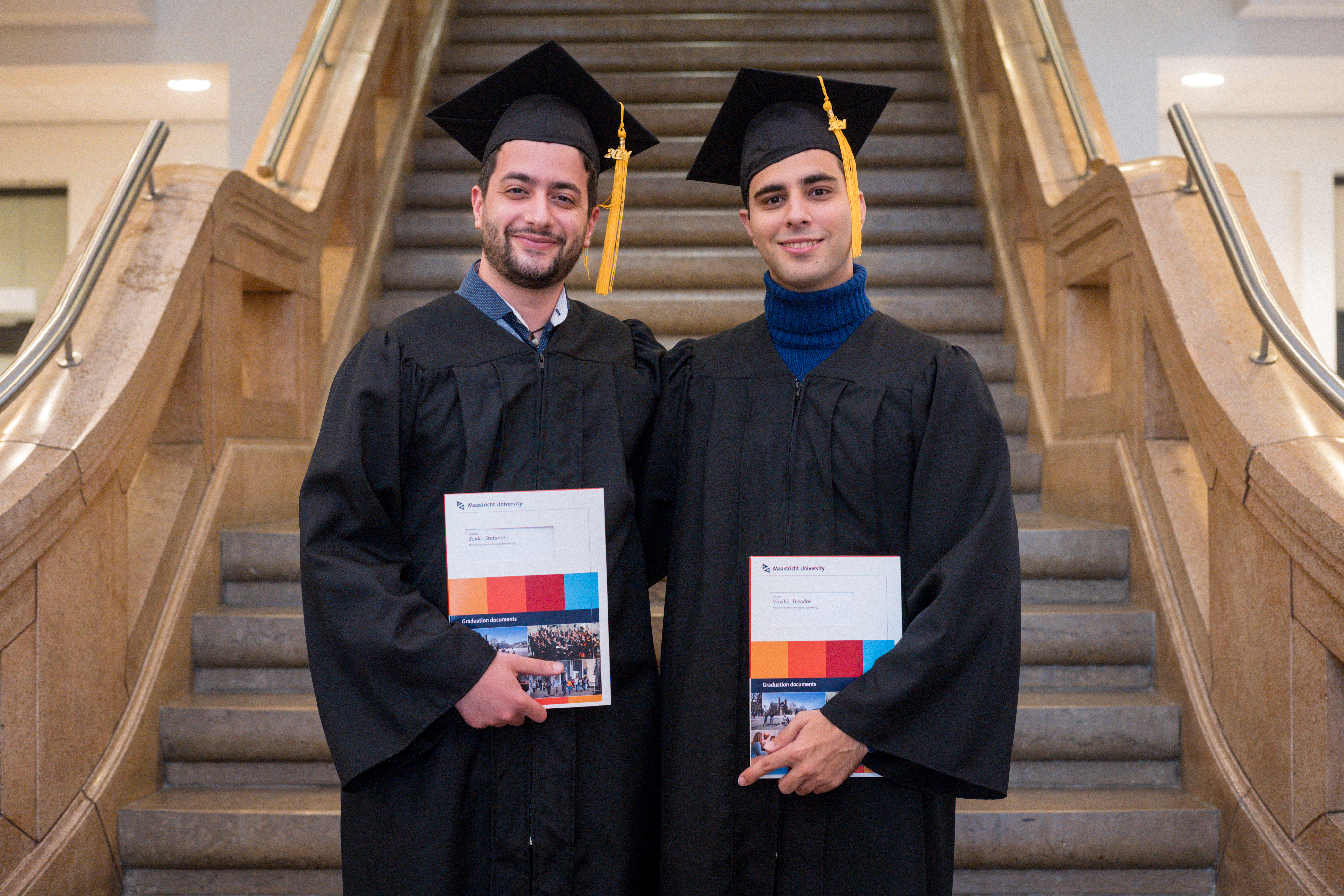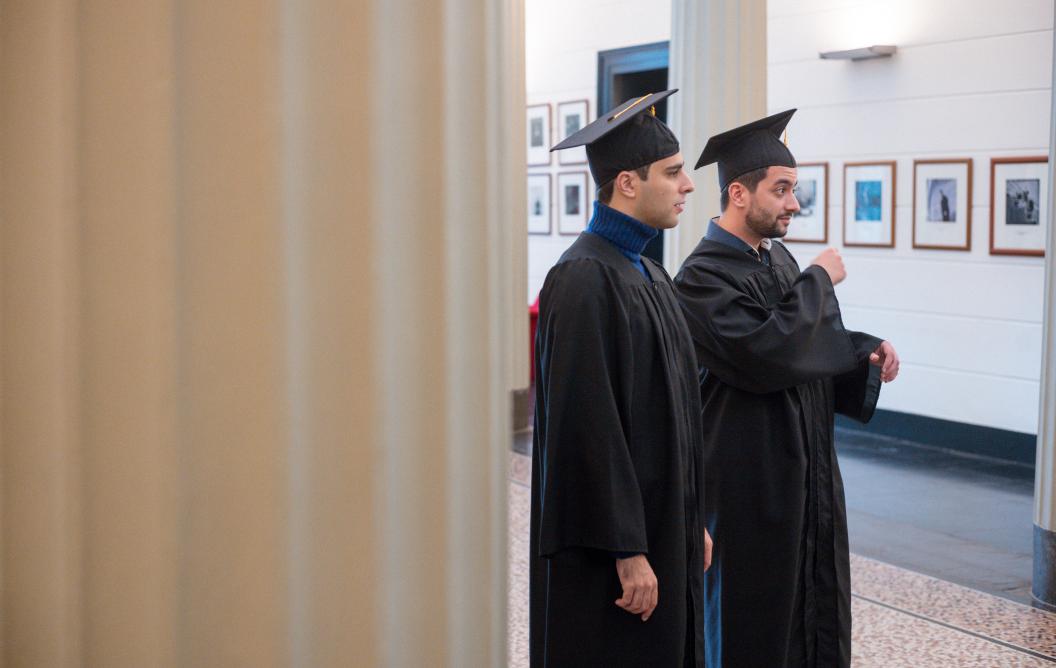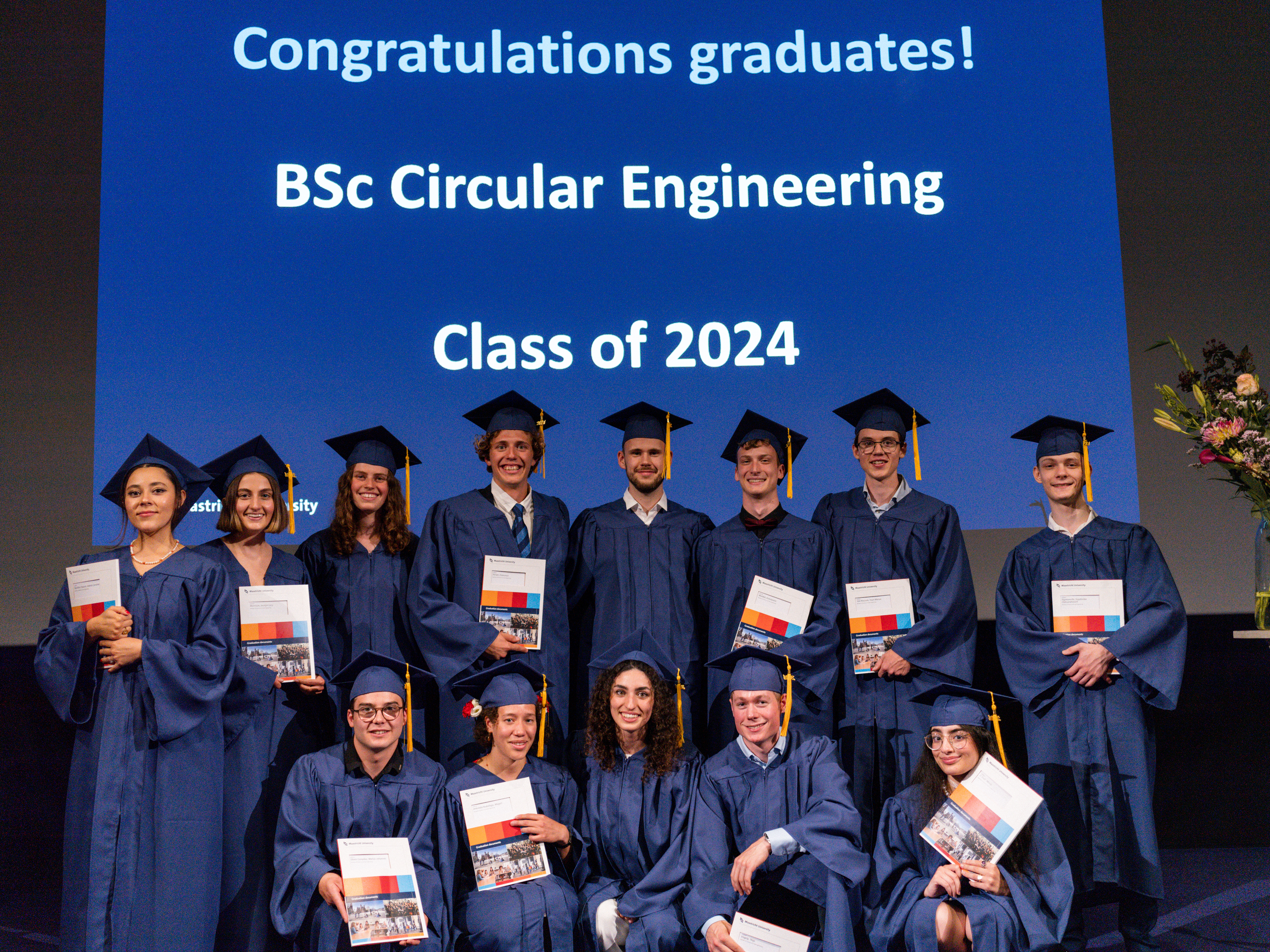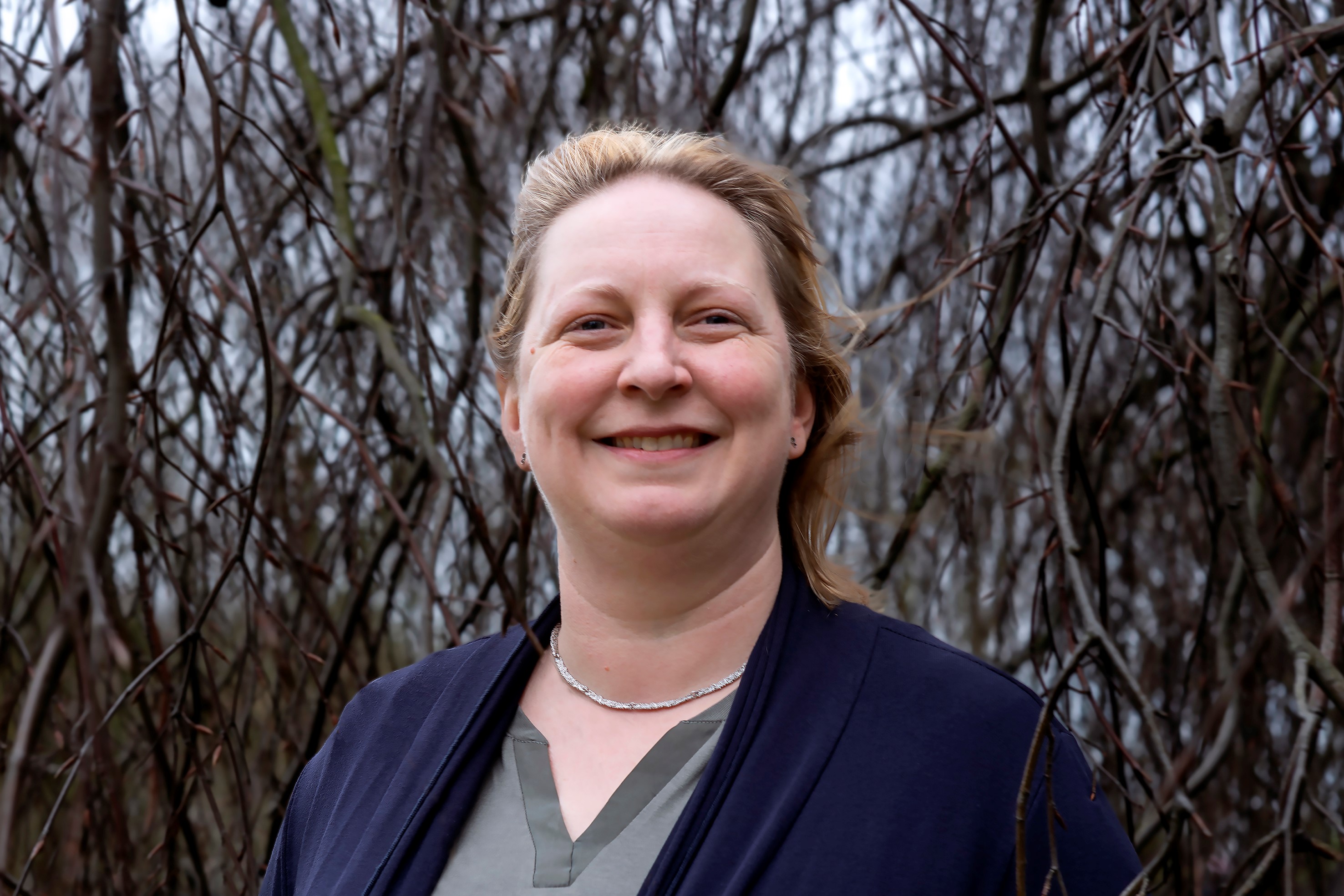First Imaging Engineers see their diploma
This summer, the first students finished their master’s programme in Imaging Engineering. They appreciate the opportunity to be involved in this world-wide unique programme that combines science and technology in imaging. Their secret to success is chocolate.

Theo Visvikis and Stefanos Zoidis were both aware that they belonged to the first group of students to enrol in the Imaging Engineering programme. Because the programme did not begin before the academic year 2022/2023, Theo was even prepared to wait a year after receiving his bachelor's degree. "Combining different imaging techniques has always appealed to me; therefore, imaging engineering especially thrilled me. Since the programme covered so much more ground than just chemistry, it was even beyond my expectations. Stefanos continues: “I wanted to study the interactions between molecules and molecular structures. This information cannot be obtained using conventional chemistry, but imaging techniques can.”
Unique
"Biochemistry can explain the functions of a molecule, imaging engineering goes beyond that." Theo says, "We can image the molecule's origins or potential differences in function, such as in disease. Stefanos advises soon-to-be master students, "If you enjoy using equipment and being able to see what you are doing with your own eyes, you should think about pursuing a career in imaging engineering. In my opinion, there is no other programme like this one anywhere in the world.”
What about the chocolate? Theo explains. "Stephanos and I would share a chocolate bar every day after classes while working to complete our assignments as fast as possible."
Summer School
Even though everything was new, Theo says that the programme ran quite smoothly. However, their professors do think there is room for improvement. Scientist Sebastiaan van Nuffel of the Maastricht MultiModal Molecular Imaging Institute (M4i) is one of them. "Students with a precisely matched bachelor's degree do not exist because Imaging Engineering is a very multidisciplinary programme. They either concentrated on technology or (bio)chemistry. We therefore need to assist them in catching up on some subjects. Up until now, we were able to accomplish this during the programme since the initial cohorts were small. For future cohorts, we want to tackle the differences in knowledge beforehand, during a summer school."
Body and Space
Gavin Hazell, the programme's director, is pleased with the programme and its graduates. "The majority of our students tell me they want to enter the field of imaging engineering, for instance, in biomedicine or in the development of new microscopes or even telescopes." (The very first assignment for the students was to build a telescope.)
Hazell would like to make certain changes to the master's programme in response to feedback from students. It needs more body and space, as it were: "The curriculum has to put more of an emphasis on biomedical imaging and include new imaging techniques. Additionally, scientific problems in imaging engineering could benefit significantly from artificial intelligence.”
Imaging Engineering
Imaging techniques reveal microscopic processes. The microscope is the most well-known example, but MRI scanners, X-ray equipment, electron microscopes, and mass spectrometers are all instruments that can image materials down to the atomic scale.
Imaging Engineers stretch the use of techniques beyond their conventional applications. A doctor uses an MRI scanner to make an image of, let us say a tumour, but an imaging engineer can use the same technology to study the structures' chemical makeup. Another example: Chemists use mass spectrometers for chemical analysis, but imaging engineers can use them to image tumours and, at the same time, analyse their biochemical processes.
Imaging engineers take charge of developing and improving imaging techniques, as well as devising and perfecting experiments that scientists can perform using the equipment. The Imaging Engineering master's program is unique in that it prepares engineers to use cutting-edge techniques to improve our understanding of the world.

Hazell plans to capitalise on two major opportunities to fulfil his wishes: "Our colleagues in the Department of Advanced Computer Sciences have a wealth of knowledge on AI, both in the fields of research and education. Thanks to the impending merger of Maastricht University and the MUMC+ university hospital, the programme and the medical staff will be able to work together even more closely.
Hazell favours a greater emphasis on applied courses: "We have a programme that teaches at the forefront of really advanced imaging techniques. Therefore our students must be able to communicate with non-engineering colleagues, such as medical doctors, to translate their wishes into innovative engineering solutions. I thus want to concentrate a bit more on the applied side of imaging engineering."
Van Nuffel is happy with the recent graduates. “We were able to maintain their interest in both science and the field of imaging. Theo and Stefanos will both start their careers as PhD candidates. Aside from this, it is amazing to observe the students' growth over the past two years. As you carry out your duties as a lecturer, you hardly ever consider how your work affects the lives of your students. I was therefore touched to hear the students, and their parents thank us at the graduation ceremony, as it came to mind just how much of an impact we have on their lives.”
Also read
-
"We are the pioneers in a brand-new field of engineering sciences, not just in Maastricht but globally as well", says Francesco Ferrari about the group of thirteen students, himself included, who in July received the first bachelor's degree in Circular Engineering.
-
Maastricht University received grants for three of the ten research projects starting in the National Growth Fund program Circular Plastics NL.
-
"I am proud that our new Circular Plastics group published its first completely in-house research," Kim Ragaert says. She founded the research group three years ago, when she moved to Maastricht. Her work has laid the foundations for many innovations in the field of plastic recycling, and she is...


